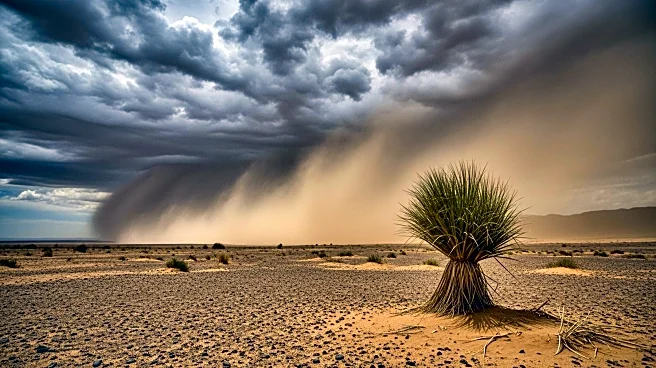What's Happening?
Satellite imagery has captured a dust storm sweeping across the Tarim Basin in western China, a region known for frequent dust events. The storm, visible as a broad tan cloud, is part of the seasonal dust activity that affects the area. The basin's unique geological features, including tectonic activity and colorful rock formations, contribute to the dust storms. Researchers have documented an average of 60 dust days per year, with varying visibility and wind conditions.
Why It's Important?
The dust storms in the Tarim Basin have significant environmental and health implications. They affect air quality and visibility, impacting local communities and ecosystems. The storms also highlight the broader challenges of desertification and climate change in the region. Understanding the patterns and causes of these dust events is crucial for developing strategies to mitigate their impact and protect public health.
Beyond the Headlines
The geological activity in the Tarim Basin, including tectonic forces and erosion, plays a key role in the formation of dust storms. These natural processes create unique landscapes but also contribute to environmental challenges. The ongoing research into dust particle size and distribution provides valuable insights into the dynamics of dust storms and their seasonal variations.













